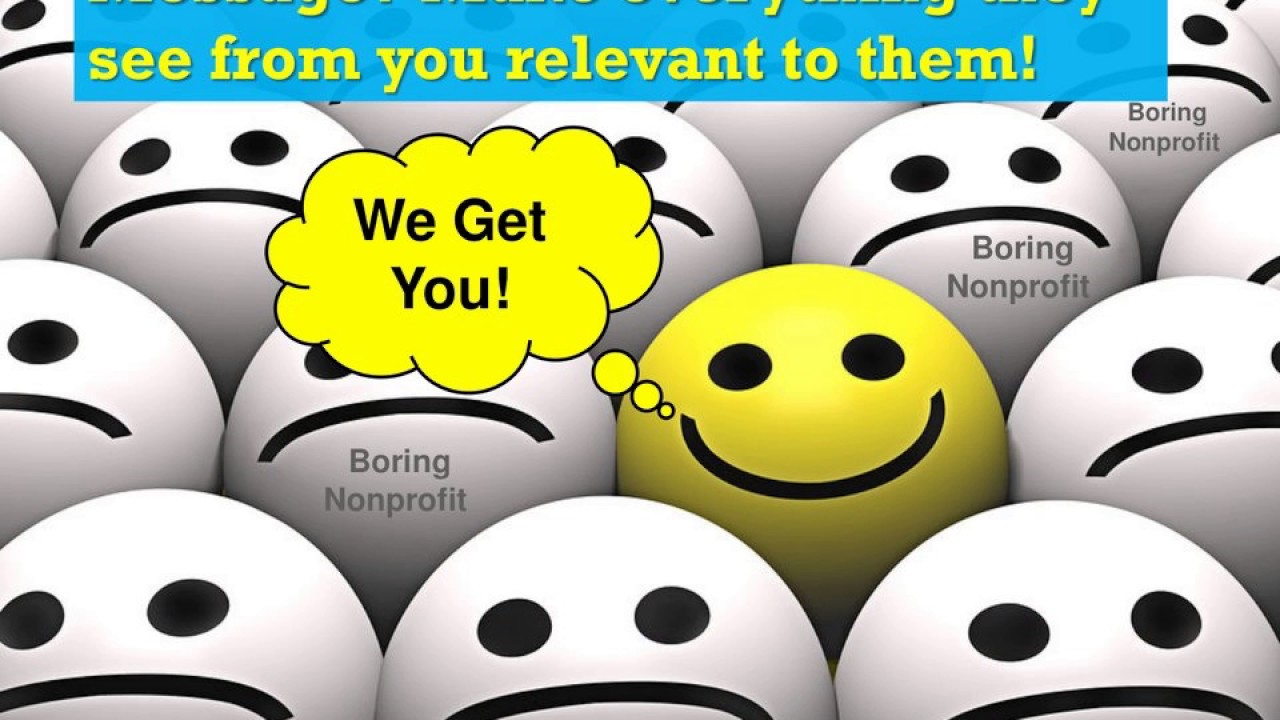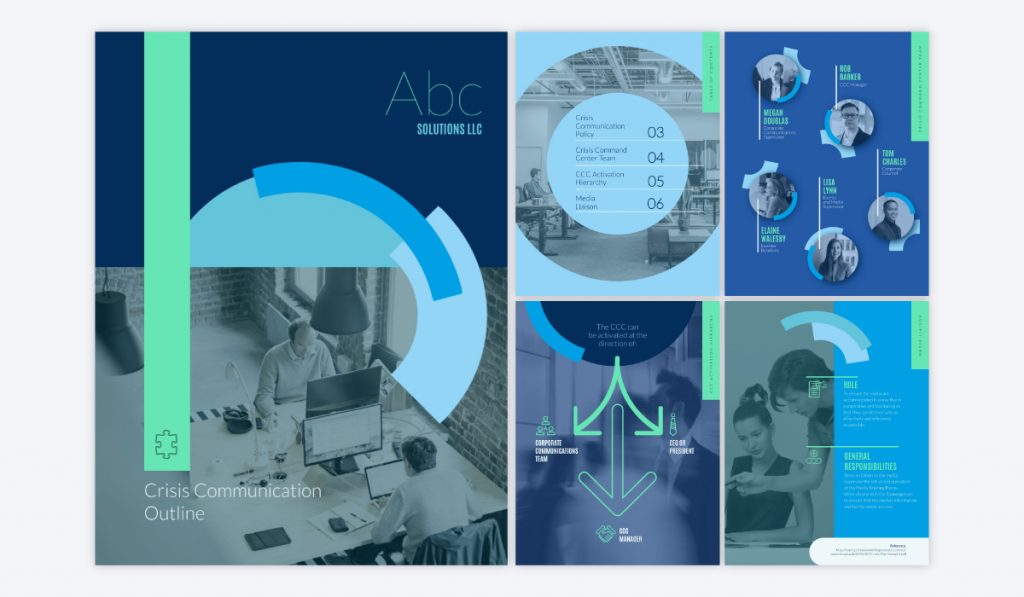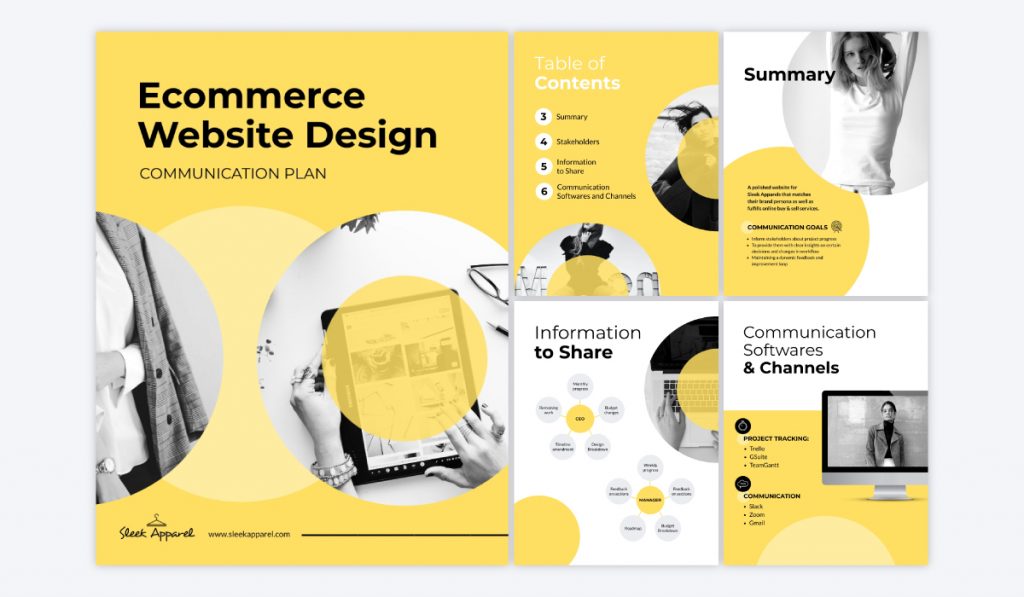A communication planin project management is a description of how you intend to convey essential, ongoing project information to key stakeholders. Your communication strategy will assist your team in determining who should get which alerts and when project stakeholders should be notified.
As part of your communication strategy, you'll specify which channels stakeholders should use and when, how frequently different details should be shared, and who is accountable for each channel.

Need to Create a Communications Plan? Here's What It Should Look Like
7 Steps To Have An Effective Communication Plan
Conduct An Audit Of Your Current Communications Materials
Before you sit down to start working on your strategy, you must first identify where it will fit into your business. As a result, it's critical that you do a "state of the union," or audit, of your company's present communication atmosphere. This might assist you in identifying any trouble areas.
Assume you need to develop a communications strategy for the introduction of a new product. To construct your plan, you must first conduct an assessment to discover holes in your present marketing strategy.
After doing the audit, you may discover that there is a significant gap in your marketing materials in which you rarely touch a topic that is relevant to your new product. You'll want to include this issue in your communication strategy.
Conduct A Situation Analysis
A scenario analysis aids in assessing an organization's skills and overall health. It's an excellent technique to assess the present state of your organization's communication.
Conducting an audit can provide you with as much information as you require.
Consult department leaders, process owners, and other internal staff members to acquire essential information from a scenario analysis.
In order to do scenario analysis, you must analyze both the internal and exterior settings. You may accomplish this by using the following tools:
- SWOT Analysis. SWOT analysis may be used to assess your organization's strengths and weaknesses, as well as the opportunities and dangers that exist in your external environment.
- PEST Analysis. A PEST study allows you to investigate political, environmental, social, and technical variables that exist in your organization's external environment yet may have a substantial influence on how things function in your firm.
- Perceptual Map. The perceptual map is an effective competitor analysis approach. It enables you to see how your clients view the brands of your competitors in the market in comparison to your own.
Determine And Define Objectives/Goals
You can find your way once you know where you are. The next stage is to identify your objectives.
Consider the outcomes/results you wish to attain from your communication strategy. As you construct your communication strategy, these will become your goal(s).
Determine The Audience To Whom You Intend To Convey Your Communications Plan
Knowing and comprehending your listener is the first step toward effective communication. In this situation, if you're drafting a crisis communication strategy for stakeholders, who are you writing for? Employees, investors, consumers, local government officials, and media outletsare all examples of stakeholders.
If you're writing for the media, a press release outlining your objectives is a fantastic way to reach out to that audience. There should be a procedure in place to choose who will talk to the media, an outline of what they will say, and a plan of action in place moving forward.
Determine The Media Channels And Develop A Strategy
As you undertake research on your target audience, you will discover that their needs and tastes vary.
It is obvious that you will not be able to reach all of them with a single media channel or keep their attention with a single sort of content.
When developing your media channel plan, consider the most effective channels you can conceive of. When targeting different audience segments, make sure you use the best channel.
Make A Publishing Schedule
When and how often do you want your audience to receive your message? Create a content calendar or a Gantt chart to outline a timetable for your publishing plan.
You may also need to evaluate the resources accessible to you. Publishing great blog entries on a daily basis would be futile if you only had one content writer.
After Presenting Your Plan To Stakeholders, Evaluate The Results To Identify Accomplishments And Areas For Improvement
There is always room for advancement. After presenting the strategy to stakeholders, evaluate the outcomes and identify areas for improvement for the next time.
For example, the advertising firm may not have fulfilled its aim of increasing potential applications by 25% within a quarter. They may revise their goals to allow themselves extra time, or they may shift their quarterly emphasis to accommodate those goals.
Alternatively, if you discover that specific terminology in your communications strategy caused tension or worry among internal stakeholders, consider how you may rephrase it the next time to ensure your communications plan feels helpful, useful, and positive.
Examples Of Communication Plan Templates
Strategic Communication Plan
Strategic communication plans are critical documents used by enterprises, organizations, and businesses to ensure consistent and reliable communication with their audiences.
Crisis Communication Plan
Every startup, organization, or enterprise will face a crisis at some point. It might be a dissatisfied consumer or a worldwide epidemic. As a result, a crisis communication strategy is required to identify actionable actions in any situation.
Project Management Communication Plan
Is your team collaborating on a project and do you need to keep everything in order and on track? Are you seeking a means to inform everyone about what has to be done and when it needs to be done?
This project management communication plan templateis ideal for serving as the foundation for your action plan.
What Is Communication Plan Template?
In project management, a communication strategy describes how you expect to communicate critical, ongoing project information to key stakeholders. Your team's communication plan will help them decide who should get certain notifications and when project stakeholders should be alerted. You'll determine which channels stakeholders should use and when, how frequently different facts should be given, and who is accountable for each channel as part of your communication plan.
What Does A Communications Strategy Look Like?
A communications strategy is a strategy for reaching out to your target audience. It comprises who you're talking to, why you're talking to them, how and when you'll talk to them, the format of the information, and the channels you'll use to deliver it.
Conclusion
Clear communication may assist you in sending the appropriate message at the appropriate moment. Allow for seamless cooperation while also guaranteeing that every team member is kept informed at all times.
As a result, your team will be able to spend less time talking about work and more time on high-impact tasks.


